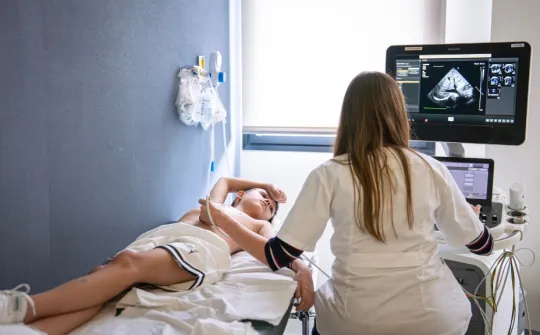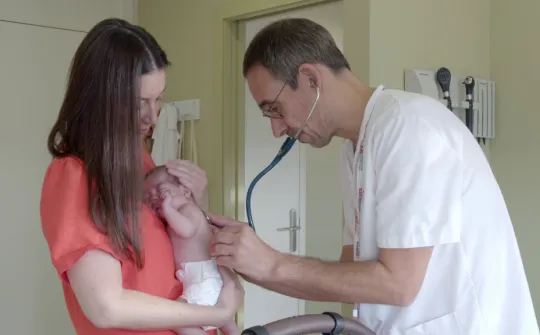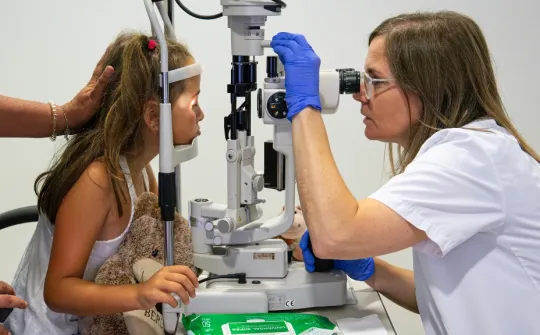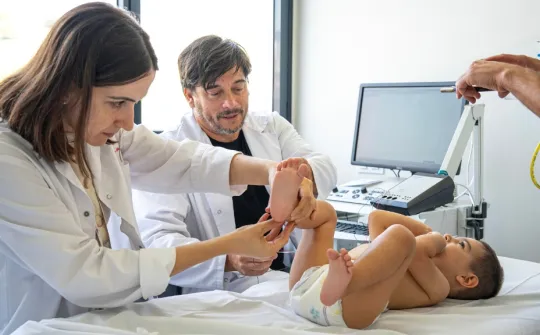The FDA approves naxitamab, an immunotherapy treatment against high-risk neuroblastoma used at SJD Barcelona Children's Hospital
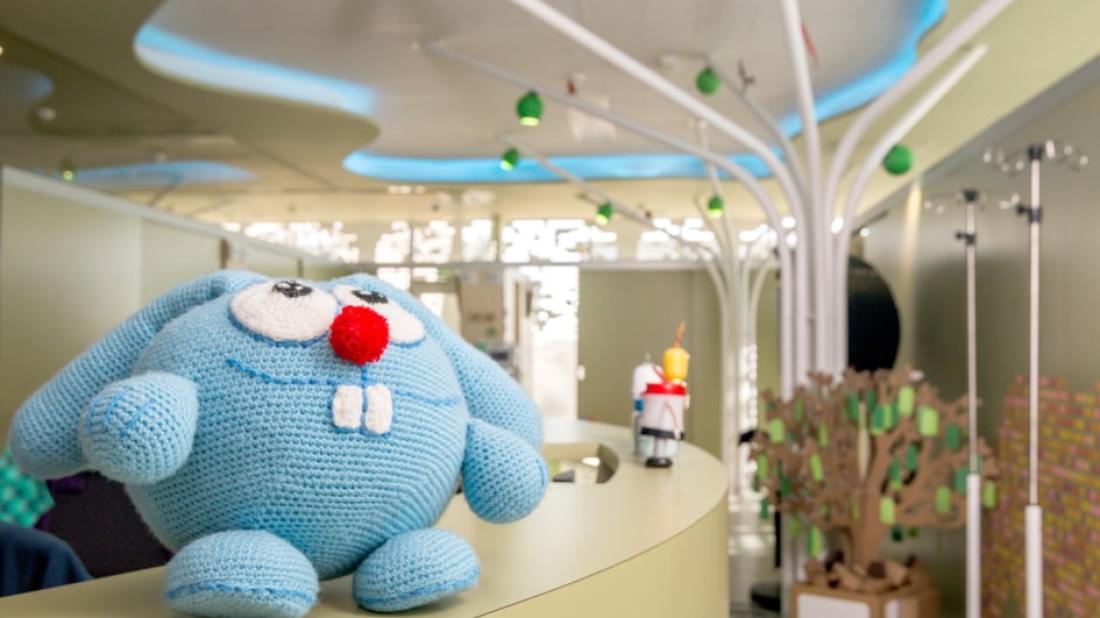
The drug has been approved for the treatment of patients with refractory or relapsed neuroblastoma
The FDA (United States Food and Drug Administration) approved naxitamab (Danyelza®, Y-mAbs Therapeutics, Inc.) in November 2020 for its medical use in the treatment of neuroblastoma of high refractory or relapse risk in bone marrow and/or bone, thanks to the impressive results obtained and their duration in a population of incurable patients. Naxitamab was administered for the first time in the world on June 12, 2017 at SJD Hospital Barcelona. Since then, more than 200 patients from around the world have been treated. This treatment was created at the Memorial Sloan Kettering Cancer Center (MSKCC) in New York (United States) and developed by the Ymabs company, founded by Mr. Gad, father of a surviving patient of neuroblastoma of high-risk of relapse in the central nervous system thanks to the treatments received at MSKCC.
The result of the phase II international multicenter clinical trial (NCT03363373) demonstrated a 61% complete response rate in patients with refractory or relapsed bone and/or bone marrow disease (without soft tissue involvement). The first results of this study were announced at the SIOP 2020 congress (52nd edition of the Congress of the International Society of Paediatric Oncology) by Dr Jaume Mora.
In the SJD Hospital , in addition to the trial patients, 55 patients in first complete remission of their high-risk neuroblastoma have been treated with naxitamab. The results show 92% survival at three years, regardless of whether they had received high doses of chemotherapy and autologous transplantation or not. These results reinforce the recommendation not to use autologous transplantation in the management of these patients, as the experts from SJD have advised since 2011 (Mora J et al. Frontiers 2020).
Ymabs is currently in negotiation with the European Medicines Agency (or EMA) and other agencies around the world on the type of trials required for the approval of naxitamab in various regions. Our hospital is the only centre authorised by Ymabs to provide naxitamab, both in clinical trial regime and in compassionate use, always with the necessary authorisation from the Spanish Ministry of Health.
What is naxitamab and when is it used?
Naxitamab (sold under the trademark Danyelza® in the US) is an anti-GD2 monoclonal antibody. GD2 is a suitable antigen for mAb therapy because it is highly expressed, 5–10 million copies per neuroblastoma cell. Furthermore, its expression is stable, with very little evidence of a decrease in response to immunotherapy treatments directed against this substance. GD2 is an oncofoetal antigen, which means that its expression in normal tissues is fundamentally restricted to foetal development, mature neurons, and pain-conducting fibres of the peripheral nervous system. In children and adults, most GD2-expressing neurons are protected from intravenous infusion of anti-GD2 antibodies by the blood-brain barrier.
To date, 3 anti-GD2 antibodies have been used in patients with neuroblastoma: two murine (3F8 and 14G2a) and one chimeric (ch14.18). 3F8 is an IgG3 type murine anti-GD2 antibody discovered by Cheung NK in 1985. The chimeric human/murine mAb ch14.18 was generated by Ralph Reiseld in 1987 from murine immunoglobulin 14.18 variable region genes and human IgG1 constant region coding genes which are known to effectively mediate ADCC and complement-dependent cytotoxicity (CDC). The antibody was produced in the non-secreting murine hybridoma SP2/0 (ch14.18/SP2/0) and preclinical evaluation showed that the antibody ch14.18/SP2/0 could effectively kill tumour cells of neuroectodermal origin in vitro mediated by ADCC and CDC. 3F8 was developed at Memorial-Sloan Kettering (MSKCC), NYC, and was the first anti-GD2 antibody to treat neuroblastoma patients, in 1987. Since then more than 800 patients have been treated with 3F8 at MSKCC. The initial phase II study in patients with stage 4 neuroblastoma after completion of gross disease treatment was very promising. Before 3F8, the majority of patients considered in complete remission by conventional methods had evidence of minimal residual disease (MRD) when more advanced technology such as PCR, immunocytology or radiolabelled 3F8 imaging was used. MRD tests were negative in 19 of the 27 patients treated with 3F8. The results were further improved when the mAb was combined with granulo-monocytic colony stimulating factor (GM-CSF) to increase the effector activity of macrophages and neutrophils.
The anti-GD2 antibodies that have been approved for human use are: naxitamab (Danyelza®) and dinutuximab (Unituxin®) in the United States, and dinutuximab beta (Qarziba®) in Europe. Dinutuximab and dinutuximab-beta contain parts of their molecule of murine origin, which is why they represent the group of anti-GD2 antibodies called chimeric. The development of antibodies against the murine part of chimeric antibodies in patients (HAMA) is a factor that has been shown to be limiting, limiting the effectiveness of the treatment. It was the removal of the murine parts of the antibody that led to the creation of the humanised anti-GD2 3F8 antibody or naxitamab (hu3F8). Naxitamab also offers, as an advantage for the patient, a short infusion time (30-60 minutes), which allows its administration on an outpatient basis, unlike the dinutuximab family (which requires 10-20 hours of infusion).
Danyelzahas been approved in combination with GM-CSF for the treatment of patients with refractory or relapsed neuroblastoma in bone or bone marrow with partial response or stable disease on prior treatment. This indication by the FDA was approved through an expedited regulatory process based on demonstrated objective responses and the remarkable duration of responses. Danyelza is administered to patients 3 times in a week on an outpatient basis and treatment is repeated every 4 weeks. Danyelza received a priority review from the FDA, the designation of "Orphan Drug", "Breakthrough Therapy", and "Rare Pediatric Disease designation". The EMA is expected to consider it of a similar priority.
300 new cancer patients treated each year
The SJD Barcelona Children's Hospital is one of the centres with most experience in treating children with cancer, a disease which is considered rare. This accumulated experience is possible, in part, thanks to a growing demand from parents (of national and international origin) who seek innovative and quality medical care for their children with cancer, comparable to other reference centres in Europe and the United States. The translational research model of our centre, which is based on joint work with the childhood cancer research laboratory, seeks to offer the greatest options to our patients.
The Oncology Department treats, on average, 300 new patients each year, of which 30% are boys and girls from outside Spain. In 2021, the Pediatric Cancer Centre Barcelona (PCCB) is scheduled to open at our facilities, the care model of which will be unique in Europe.
The Hospital currently treats more than 800 international complex disease patients from more than 90 countries. In the case of cancer patients, the success rate of the treatments depends on the type of disease of each child, if they have received any previous treatment and the possibility of prescribing improved or innovative treatments, such as naxitamab, which has recently been approved by the FDA.
